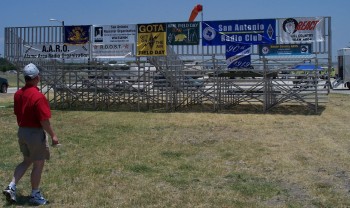Note: I normally only post Texas related articles here, but this group of hams got such great PR coverage in their paper that I had to post it here, with a link back to the original article of course. I didn’t write this article, it is property of THE SEATTLE TIMES Newspaper, the reporter (Kyung Song) and the photographer (Alan Berner) named in the article. – Lee N5NTG
Puget Sound ham-radio enthusiasts test their hobby’s emergency powers
In a world in which you can make a mobile call from Mount Everest and log onto the Internet from a polar-ice floe, you might expect ham radios to have long been consigned to the technological dustbin. But amateur radio endures, nourished by enthusiasts and sustained by its ability to transmit critical information even after the power supply goes out, cellphone towers get jammed and television and radio fall silent.
By Kyung M. Song
Seattle Times staff reporter
In a world where you can make a mobile call from Mount Everest and log on to the Internet from a polar-ice floe, you might expect ham radios to have long been consigned to the technological dustbin.
But amateur radio endures, nourished by enthusiasts and sustained by its ability to transmit critical information even after the power supply goes out, cellphone towers get jammed and television and radio fall silent.

